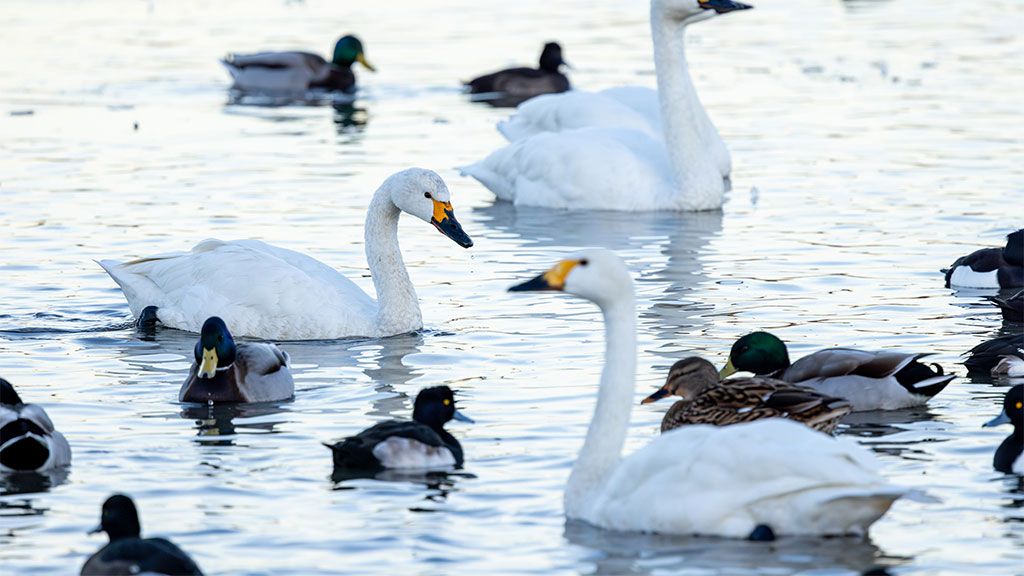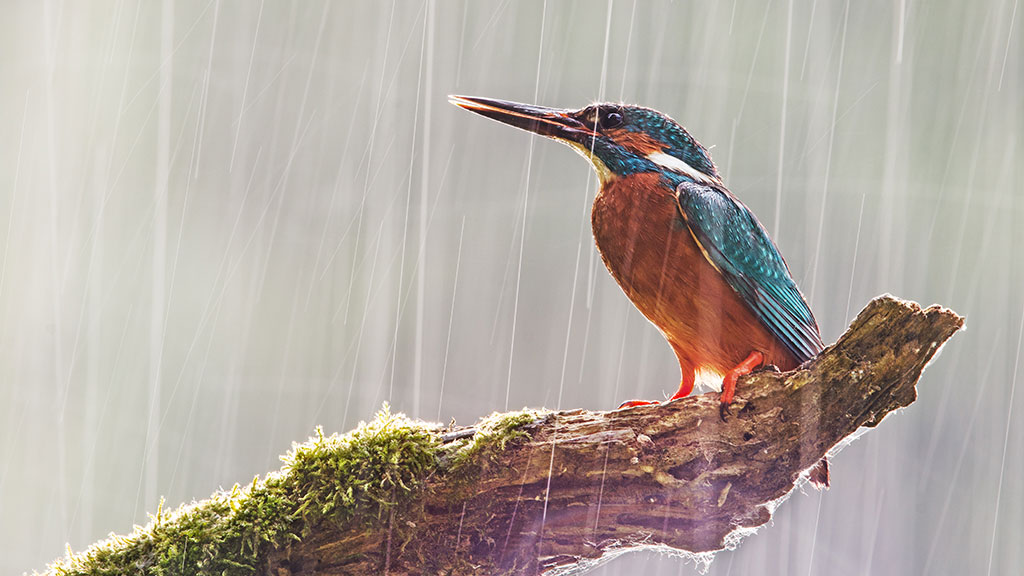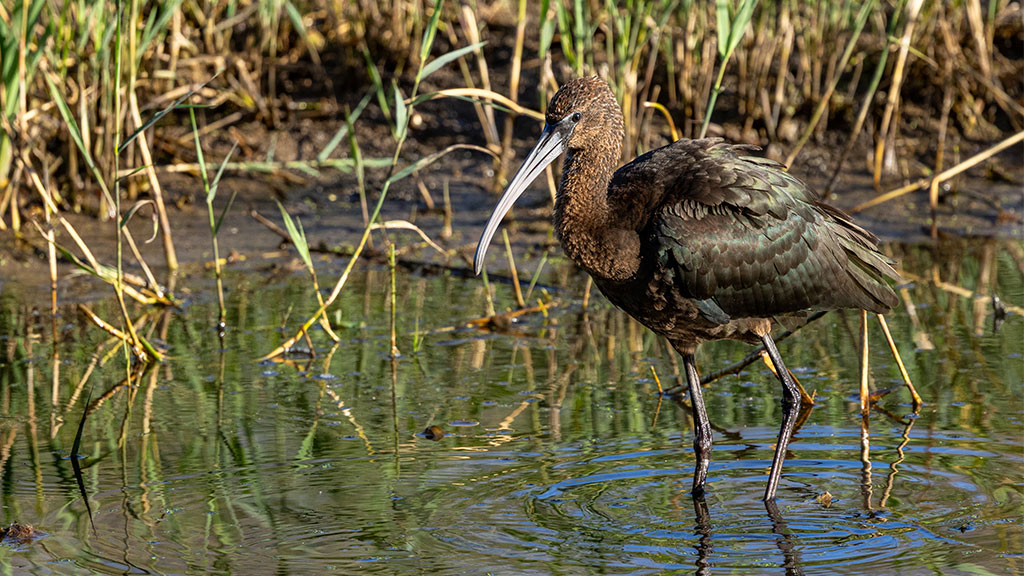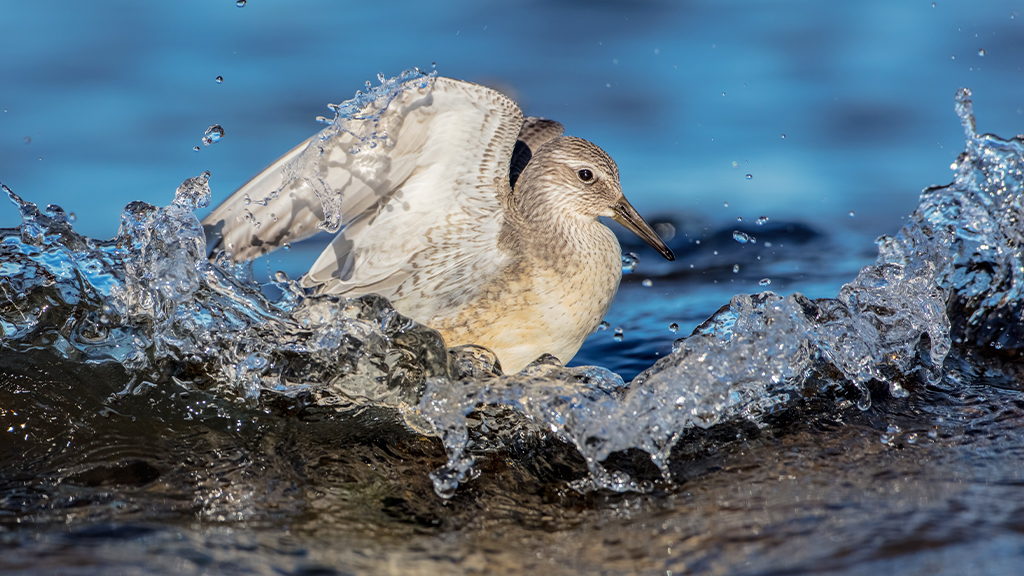The King of Fishers
A brilliant blue flash and a 'peep-peep' call are often the only things that give away the presence of kingfishers. To see them well requires patience and planning – and a visit to your local wetland centre
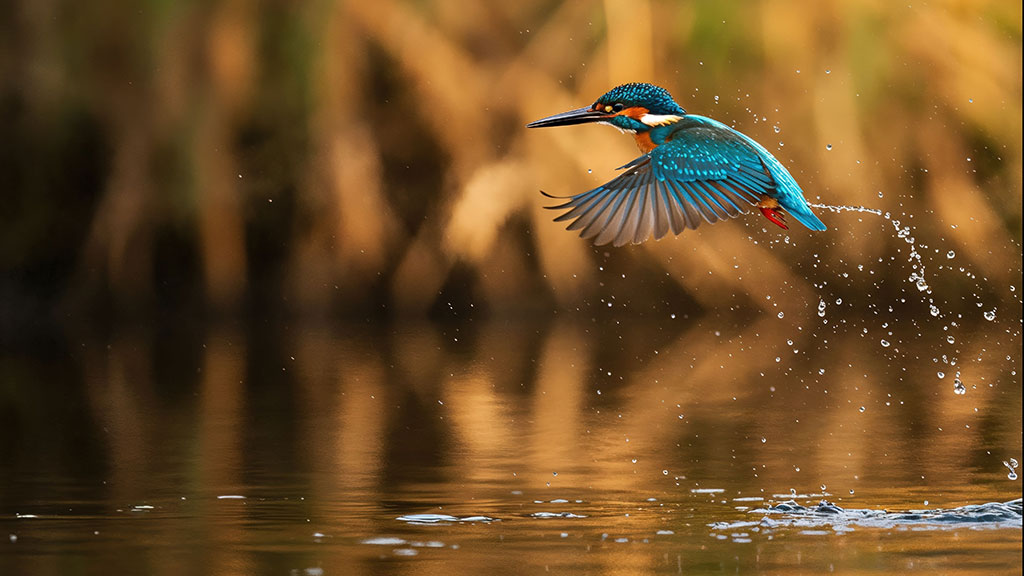
Kingfishers are the birds of dash, flash and splash. The typical encounter is of a bolt of electric blue whirring low over the water, soon out of sight, barely seen at all. Sightings are quick and thrilling; a raid, you might say, by a jewel rather than of a jewel.
But kingfishers have to stop sometimes. After all, they need to catch fish, and that takes patience. They need to meet up to court and breed, and that takes time. And if you come to a WWT centre in spring, you have a good chance of seeing the other side of the bling-feathered speedster. You can catch it when it is slower and even sits still.
Home sweet home
Most of our centres host kingfishers throughout the year, because they provide a perfect habitat. There's plenty of fresh, clean water, some of which is purified by filtration through our reedbeds. The water is, naturally enough, full of small fish, of just the right size for a pint-sized piscivore. There are perches galore, such as low tree branches and posts, ideal as springboards for the plunge-dive. And there are quiet corners, where shelter from the wind keeps the surface smooth and easy for scanning.
The real deal-breaker at this time of year, however, is the availability of potential nesting sites. Mud banks above the water surface are by no means everywhere in nature, and that's what the birds need. If there aren't enough on-site, WWT builds them. Martin McGill, Senior Reserve Warden at Slimbridge, says: 'We create nesting banks with sheer sides and deep water below, so that our kingfisher families are safe from predators. We even get into a boat and drill holes in the bank to help the birds get started on digging their burrows.
What more could a kingfisher want? Great location, close to good places to eat, well built, within budget. The birds excavate a tunnel, mainly using their feet. Kingfishers are unusually egalitarian when it comes to sharing out breeding tasks, and both male and female take part in the building project, which lasts anywhere between a week and 12 days. When complete, the tunnel is, on average, half a metre long, with a chamber at the end. Here the eggs and chicks are cared for.
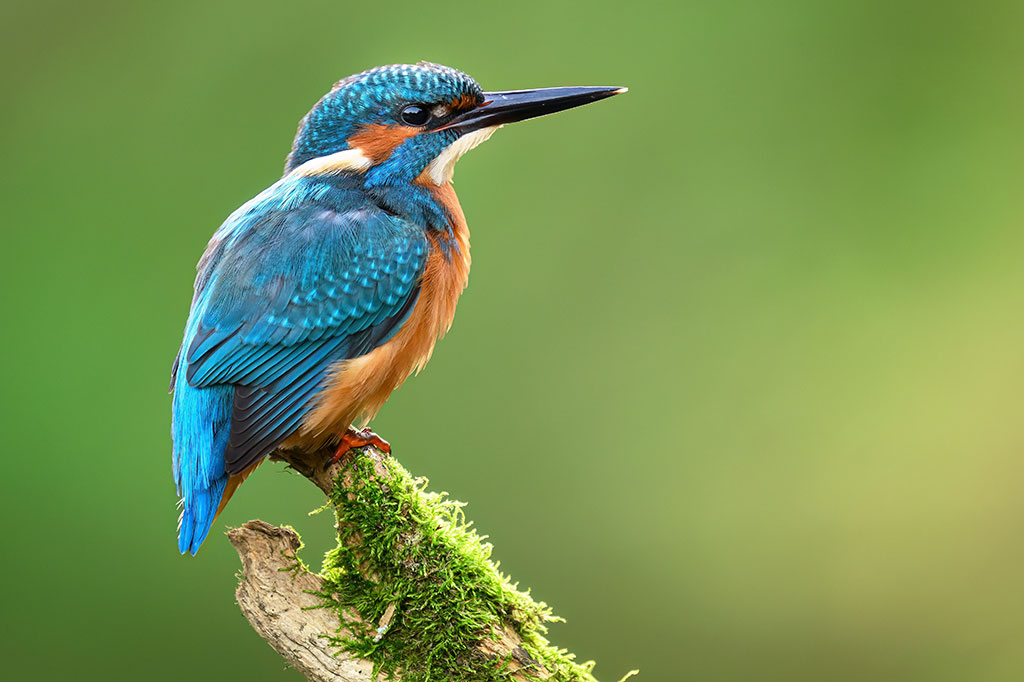
Get off our patch!
Kingfishers are undoubtedly pretty, but they are also pretty bad-tempered. Each pair has a territory, and within that territory is a core area, where the birds catch much of their fish. This is their sanctuary and they will defend it with violence if necessary.
If the resident kingfishers deem that a neighbour is straying too close, they'll display, call and chase the offending strangers. Having exhausted other options, they will physically attack. Birds have been known to hold a rival down under the water in an attempt to drown it. More insidiously, they have been reported entering their pesky neighbours' nest in order to destroy their eggs.
Despite their antipathy towards neighbours, the kingfisher pair itself is a picture of mutual cooperation and good organisation, with the two birds continuing to share tasks and support each other. Visit your local WWT centre in spring and you might be fortunate enough to see the delightful display of fish-presentation.
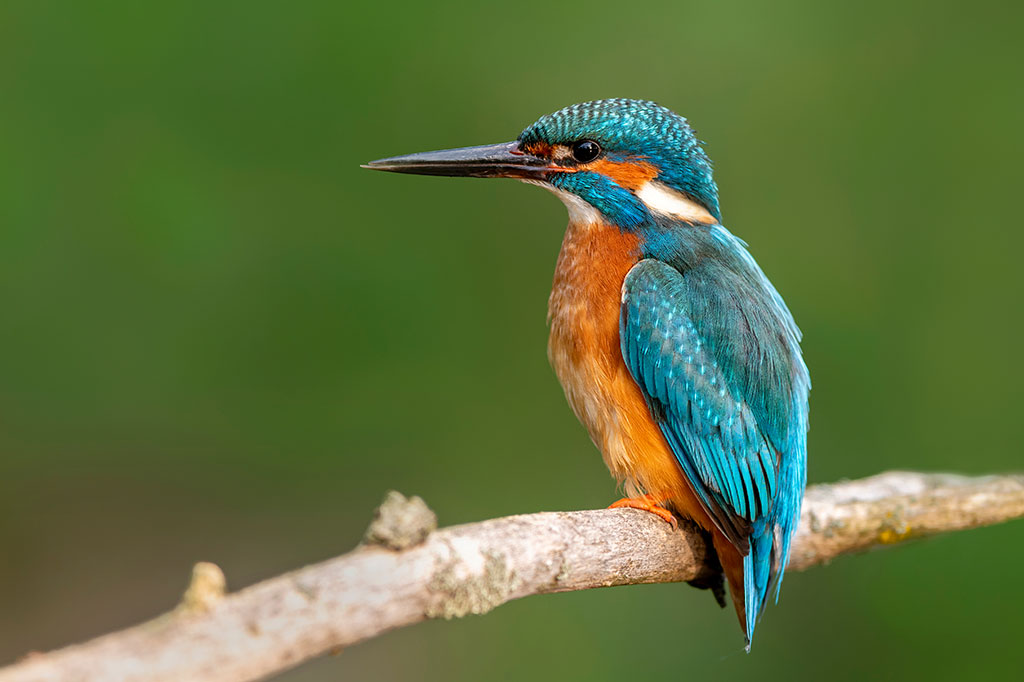
Kingfisher teamwork
After the tunnel is finished, and while the female is forming the eggs – an energy-sapping business – the male helps her by catching extra fish. He passes them to her, bill to bill, as they sit side by side on a perch. This is called courtship-feeding, with a pair-bonding aspect as well as a practical one.
Fish-presentation stops after a clutch of six to seven eggs is laid. That's because, in contrast to most other small birds, for which incubation is largely a female occupation, kingfishers share these duties. Generally, the female incubates for a session during the morning and the male in the afternoon, each covering a shift of two to four hours. At the end of a shift, the relieving bird calls and the incubating bird simply comes out of the burrow and flies off. There's little in the way of a nest-relief ceremony – it's all very businesslike.
Once the eggs hatch, within a few hours of each other, the kingfisher parents ensure the chicks are brooded and fed, with the male now typically taking the lion's share of foraging duties. Meanwhile, in the nest and among the brood itself, something remarkable happens. It's entirely normal among bird species for the atmosphere among chicks to be fiercely competitive. Siblings compete against each other, often fatally.
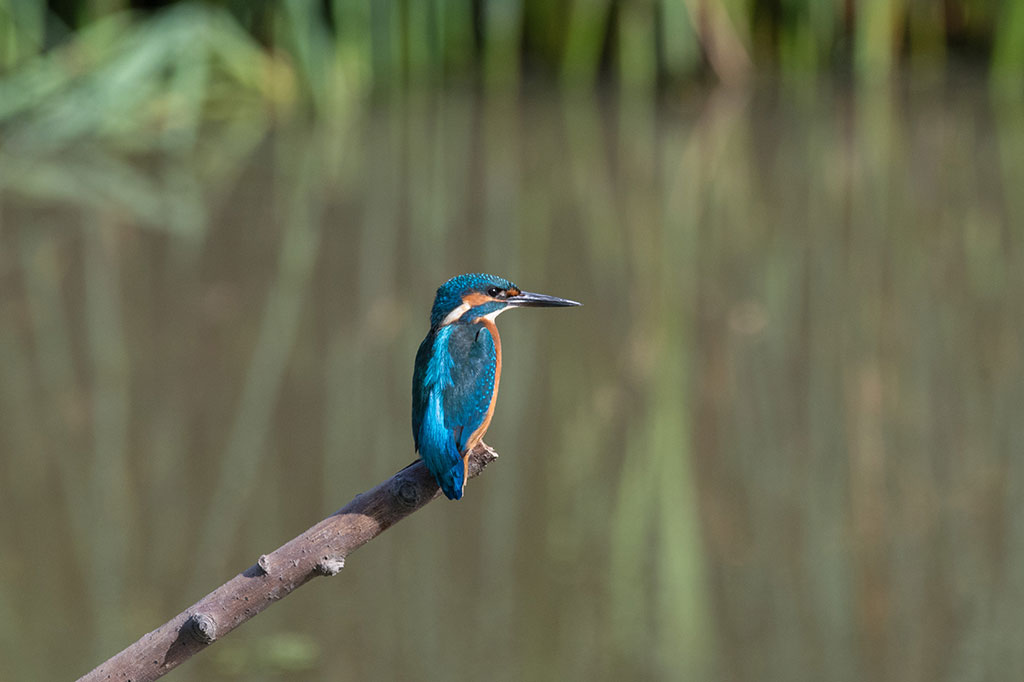
Chick carousel
Kingfisher chicks, however, follow their parents' egalitarian approach and ensure that everyone gets a fair share of food brought into the nest. They do this by adopting a remarkable ‘carousel' arrangement in the nest-chamber, in which they sit in a ring, bills pointing outward, with one chick facing towards the light of the nest entrance.
When a parent enters with a fish, only the latter chick begs and receives the food. Once it has eaten, the chicks all move round until the next in line faces the nest entrance, and so on, as each is fed in turn. This extraordinary relay continues until the young are about two weeks old, by which time it becomes more of a free-for-all.
You cannot see this going on in the nest-chamber, but you can appreciate the moment when a parent delivers food to the nest. This is the rare window when kingfishers are easy and predictable to see, when they settle and you can admire them, if only for an instant. On an average day on the first week after hatching, an adult will bring food every 45 minutes, but that comes down to 15 to 20 minutes as the brood gets older.
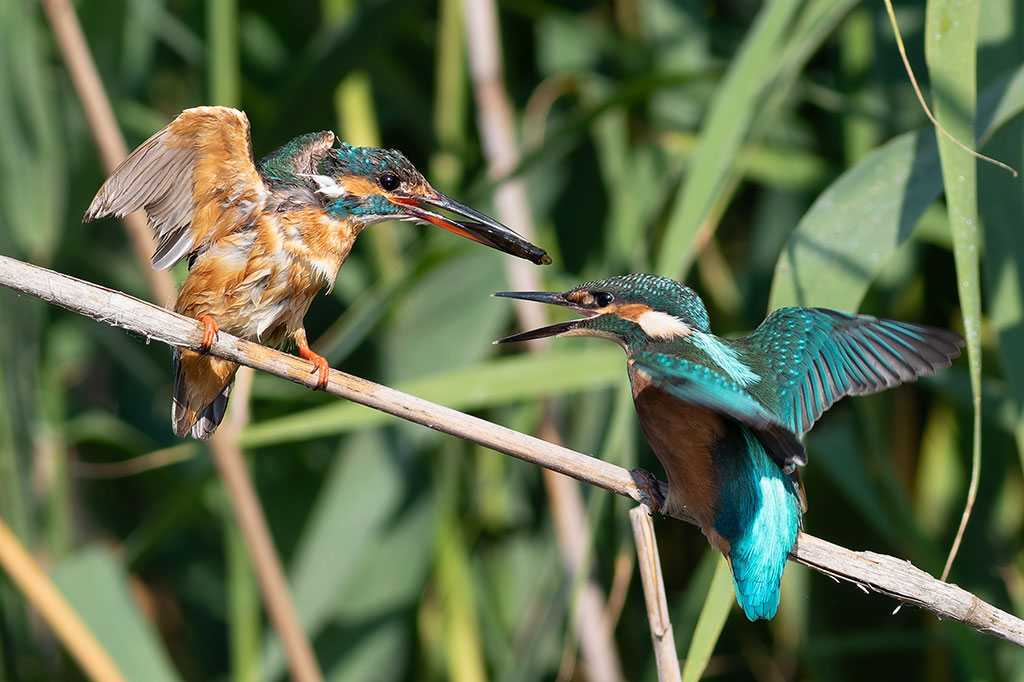
Flying the nest
The youngsters leave the nest when they are just over three weeks old. You might think that, given the difficulties of learning to plunge-dive to catch fish, the adults might feed their progeny for quite some time after leaving the nest. In fact, this isn't so; the youngsters are fortunate if they get such mollycoddling for more than four days. Instead the parents tempt them away from their territory with food and, if necessary, evict them forcefully.
That's because the parents are anxious to get on with their next breeding attempt. They will attempt two, or even three, a season, potentially producing almost 20 chicks. Such is the intensity of their season that the male might feed one brood while the female is incubating the next clutch. The breeding season, rather like the kingfisher itself, can pass in a blur, so make sure you don't miss it.
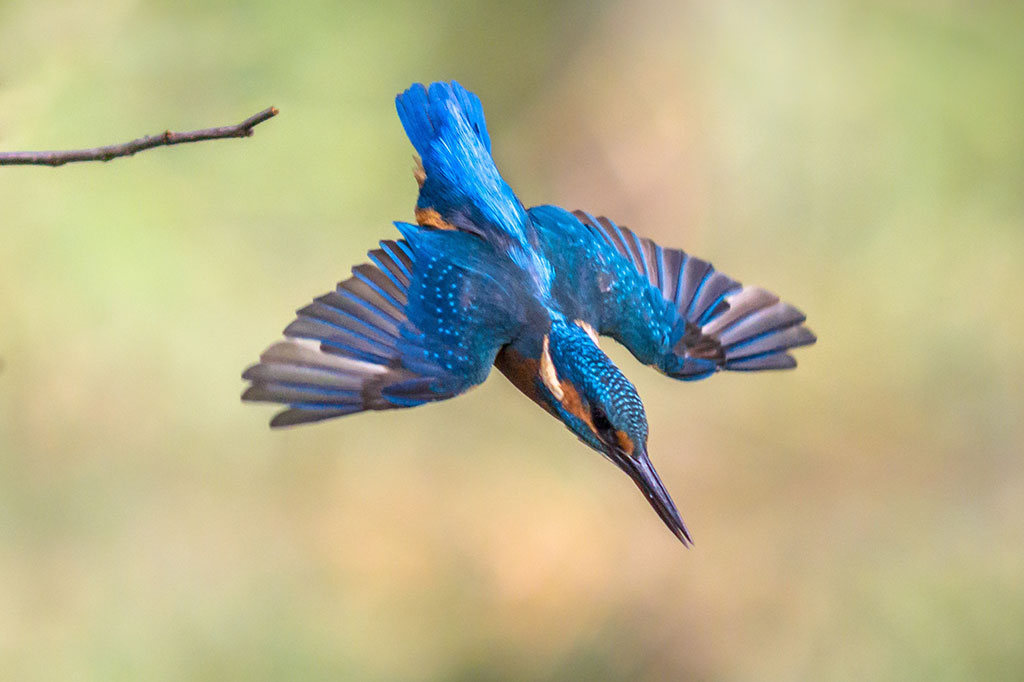
Anatomy of a dive
Kingfishers have two methods of obtaining food: by diving from a perch and by diving from a hovering position. Either way, they only plunge in if they have spotted prey beneath the surface. When perched, they tilt their head forward slightly, which gives them overlapping (binocular vision), ideal for judging distance.
They plunge in from anywhere between one and three metres above the water, though up to 11 metres has been recorded. Upon leaving the perch, they give a couple of power-flaps of the wings, and then extend the wings back when entering the water. They grab the fish straight away in the bill, and may submerge one metre. They are very buoyant, rise to the surface and a couple of wing-beats takes them clear of the water.
Ready for some kingfisher spotting?
Book a trip to your local WWT site for your chance to spot these amazing birds in action. Not a member? Book online and save time on arrival.
Find your nearest wetland site